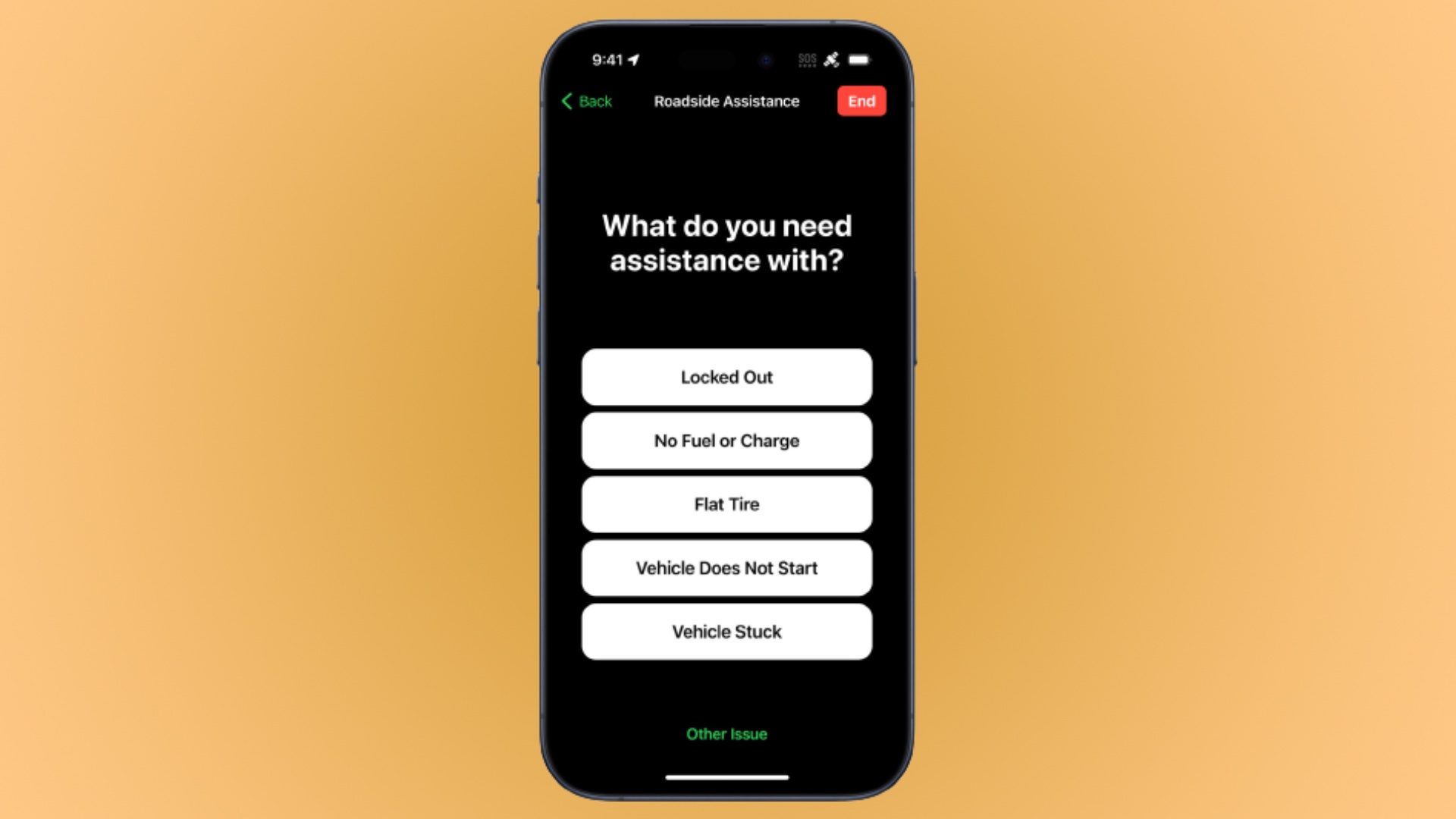Here's how your iPhone 14 & 15 can get you roadside assistance even when there's no cell service
Broken down? Your iPhone can come to the rescue.

The iPhone 14 and iPhone 15 families of devices, including the Pro models, can call for roadside assistance when you need it, even if you don't have a traditional cellular connection. It's a feature that has the very real potential to help save lives, and now we know exactly how it works.
Apple's Emergency SOS via Satellite is a similar feature that's been around since November 2022 and has already very much helped to save lives on many occasions, giving people a way to summon emergency services when in parts of the world where they would otherwise be left with no help at all. However, the roadside assistance component has only been around for a little while and requires iOS 17 or later to be installed in order to work.
Now, a YouTube video has been shared in which Roadside Assistance via SMS has been put through its paces to show just what it can do and, more importantly, what iPhone users should expect the first time that they have to use it.
AAA to the rescue
In a YouTube video put together by Brian Tong we see the exactly what's required in order to use one of Apple's best iPhones to contact the AAA when a phone call just isn't possible. It's worth noting that the AAA is the partner Apple chose in the United States and that the U.S. is the only country where this feature is available right now. However, Apple is expected to bring the same feature to other countries in due course.
Don't worry if you aren't a AAA member, though. Those who are yet to sign up will be given the option to do so when using the Roadside Assistance via Satellite feature, ensuring that they still have the chance to be rescued.
In the video, we see the steps required to get assistance when it's required and they're far from complicated. In fact, I'd wager that anyone who has sent an iMessage before will be able to do it.
The steps are simple so long as you can get a solid satellite fix, of course, but Apple does guide users through making that happen which should ensure a solid success rate. Once a connection is established everything is handled via the Messages app with Apple's compression algorithm allowing the iPhone to send and receive text messages in a relatively speedy fashion considering there's a direct connection to a satellite in Earth's orbit.
iMore offers spot-on advice and guidance from our team of experts, with decades of Apple device experience to lean on. Learn more with iMore!
Emergency SOS via Satellite and Roadside Assistance via Satellite are both free for two years after buying a new iPhone with Apple recently extending the timeframe by an extra year for those who already own an iPhone 14. Why it did that isn't yet clear, but I do wonder whether Apple is concerned about charging a fee for a feature that could potentially cost someone their life if they miss a payment.
More lifesaving features to come
Whatever the reason for Apple not charging yet, it's good news for people who could one day rely on their iPhone to help save their lives. Other features like Crash Detection and Fall Detection (on the Apple Watch) have already helped countless people get help when they are unable to summon it for themselves. And the more features that Apple can offer that help keep safe, the better.
As for what's next, Apple is routinely rumored to be working on blood pressure monitoring technology for an upcoming Apple Watch, something that could well make a huge difference for hypertension sufferers around the globe.
More from iMore

Oliver Haslam has written about Apple and the wider technology business for more than a decade with bylines on How-To Geek, PC Mag, iDownloadBlog, and many more. He has also been published in print for Macworld, including cover stories. At iMore, Oliver is involved in daily news coverage and, not being short of opinions, has been known to 'explain' those thoughts in more detail, too.
Having grown up using PCs and spending far too much money on graphics card and flashy RAM, Oliver switched to the Mac with a G5 iMac and hasn't looked back. Since then he's seen the growth of the smartphone world, backed by iPhone, and new product categories come and go. Current expertise includes iOS, macOS, streaming services, and pretty much anything that has a battery or plugs into a wall. Oliver also covers mobile gaming for iMore, with Apple Arcade a particular focus. He's been gaming since the Atari 2600 days and still struggles to comprehend the fact he can play console quality titles on his pocket computer.
